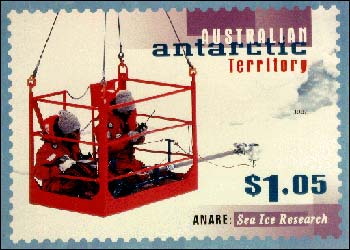|
Stephen
G. Warren
Stephen G. Warren, Professor of Atmospheric
Sciences and Geophysics, has studied climate
processes on the Antarctic Plateau (at South
Pole Station and Vostok Station) and in the
Antarctic sea-ice zone (from ships traveling
between Australia and Antarctica). The interaction
of solar radiation with clouds, snow, sea
ice, and ocean water is being studied to determine
the relative importance of sea ice and clouds
on the energy budget of the Antarctic Ocean.
Research on the Plateau has included solar
radiation reflected by the snow, thermal conductivity
of snow, and deposition of aerosols from the
atmosphere to the snow (for interpretation
of ice-core records). Currently two University
of Washington students in Atmospheric Sciences
are working at South Pole Station through
the Antarctic winter to measure the spectra
of infrared radiation emitted by clouds, snow,
and greenhouse gases, and to determine heights,
thicknesses and crystal sizes in clouds.
Steve Warren's Stories
from South Pole Station
|
 |